Translate scholar.exoplanet.eu
First of all you need to log in to the private area to be able to write a translation. To do this, go to the site(site) and at the bottom of the page, click on “Se connecter” or “Log in”.
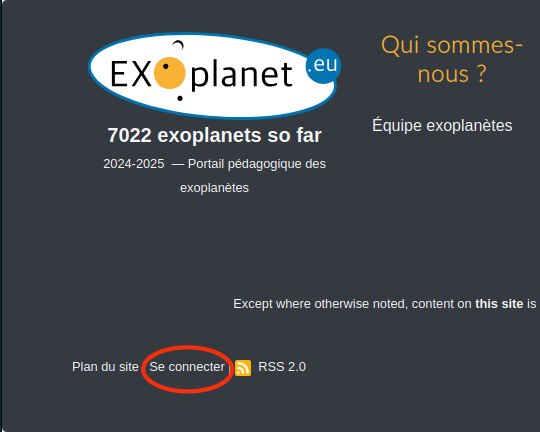
If you do not have an account or you have a problem logging in contact or
Once you have logged in, you can access the administration of the spip site by clicking on “Private area” or “Espace privé” or by going to this address.
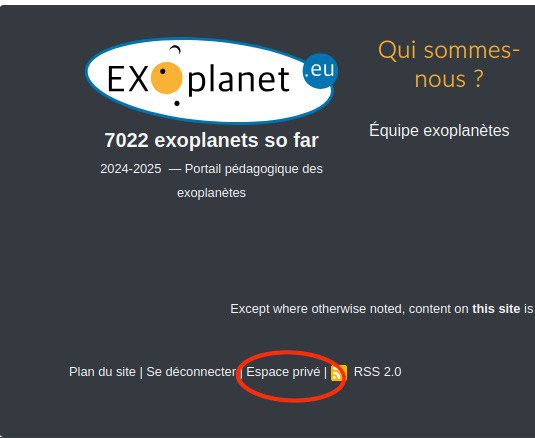
This is where you can write a translation for an article. To do this, in the menu, go to the Edit/Articles tab and click on ‘My articles’.
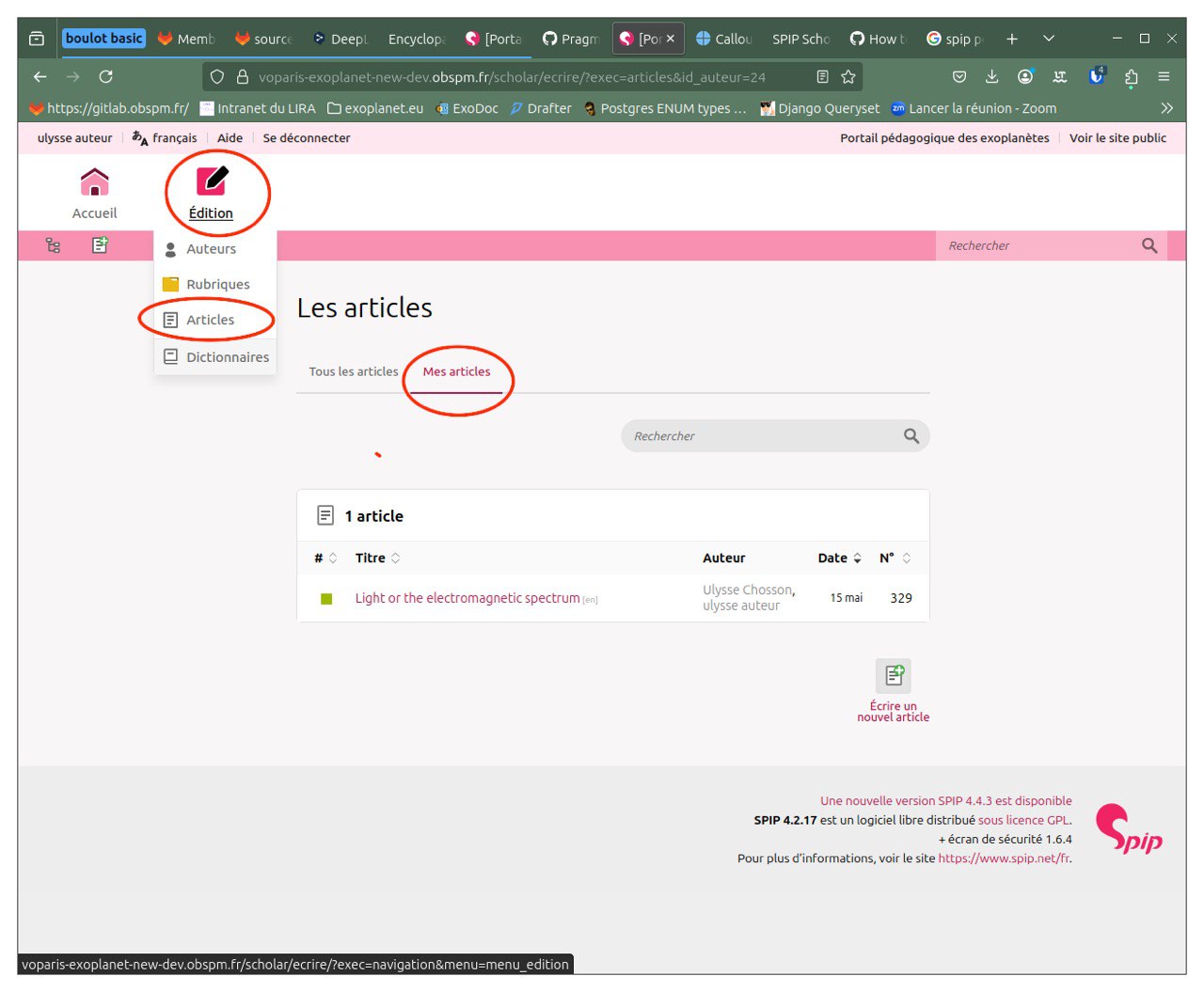
Choose an article to translate and click on it.
Translate an article
Once on the article page, check that you are on the English version and click on “Write a new translation”.
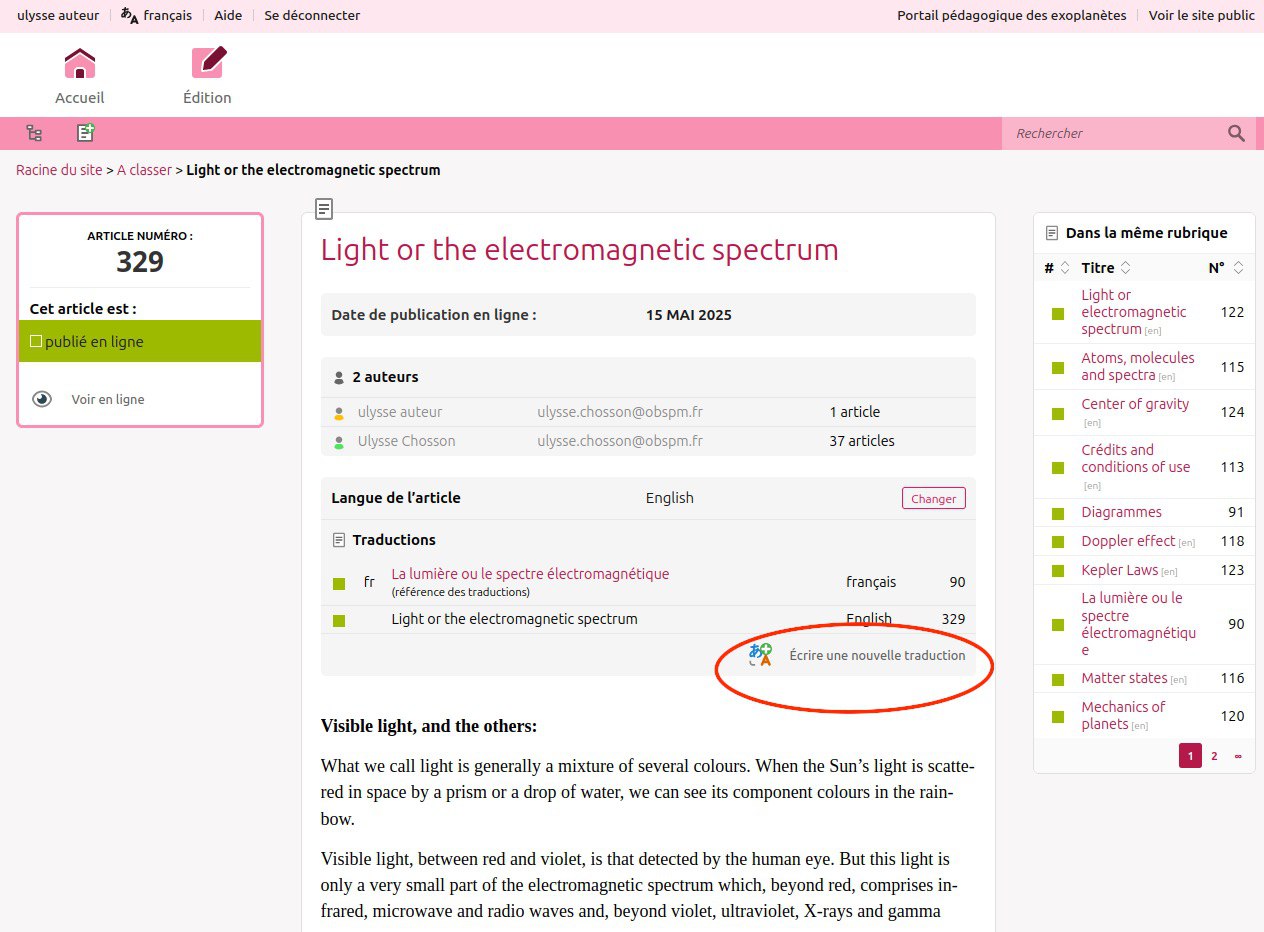
Body of the article
Change the title, Caution: it is important to keep the number in front of the title if there is one. then translate the body of the article. Be careful to keep the symbols used for syntax ({ examples } for text in italics, {{ examples }} for text in bold, -* for lists and [examples->art00] for links) as well as the tags for mathematical formulas and links. We’ll come back to mathematical formulas and links a little later.
Do not change the documents (<doc244>) for the moment, part of this documentation is dedicated to the translation of the documents.
You can save your translation at any time to see what it looks like.
Translate formulas
Maths formulas are delimited by <math> and </math> tags. You don’t have to change the formula, just translate the potential words contained in the formula.
Examples:
<math>$10^{18}\space\text{mètres}$</math>(\(10^{18}\space\text{mètres}\)) translates into<math>$10^{18}\space\text{metres}$</math>(\(10^{18}\space\text{metres}\))<math>$10^5\space\text{M}_{\text{Soleil}}$</math>(\(10^5\space\text{M}_{\text{Soleil}}\)) translates into<math>$10^5\space\text{M}_{\text{Sun}}$</math>(\(10^5\space\text{M}_{\text{Sun}}\))
You may come across formulas on several lines. This doesn’t change the way things are done.
Example
<math>$$
\begin{aligned}
\text{Une année lumière (km)}
\\
&= 365 \space \text{(jours)} \times 24 \space \text{(heures)} \times 3,600 \space \text{(secondes)}
\\
&\quad \space \times 300 \space 000 \space \text{(km par seconde)}
\\
&=1 \space \text{a.l.}
\\
&= 9.46 \times 10^{15} \text{m}
\\
&= 60,000 \space \text{UA}
\\
\end{aligned}
$$</math>\[ \begin{aligned} \text{Une année lumière (km)} \\ &= 365 \space \text{(jours)} \times 24 \space \text{(heures)} \times 3,600 \space \text{(secondes)} \\ &\quad \space \times 300 \space 000 \space \text{(km par seconde)} \\ &=1 \space \text{a.l.} \\ &= 9.46 \times 10^{15} \text{m} \\ &= 60,000 \space \text{UA} \\ \end{aligned} \]
Translate into
<math>$$
\begin{aligned}
\text{One light year (km)}
\\
&= 365 \space \text{(days)} \times 24 \space \text{(hours)} \times 3,600 \space \text{(seconds)}
\\
&\quad \space \times 300,000 \space \text{(km per second)}
\\
&=1 \space \text{l.y.}
\\
&= 9.46 \times 10^{15} \text{m}
\\
&= 60,000 \space \text{AU}
\\
\end{aligned}
$$</math>\[ \begin{aligned} \text{One light year (km)} \\ &= 365 \space \text{(days)} \times 24 \space \text{(hours)} \times 3,600 \space \text{(seconds)} \\ &\quad \space \times 300,000 \space \text{(km per second)} \\ &=1 \space \text{l.y.} \\ &= 9.46 \times 10^{15} \text{m} \\ &= 60,000 \space \text{AU} \\ \end{aligned} \]
Translate links
[an example of a link->art68]
To translate a link you need to translate the text of the link.
- If the link points to an article on the spip website or an external ressource that is available in your language you need to change the target with the correct link.
Examples:- From
[La Terre->https://fr.wikipedia.org/wiki/Terre]to[The Earth->https://en.wikipedia.org/wiki/Earth] - From
[spectre de corps noir->art64]to[black body spectrun->art311]
- From
- If the link points to an article on the spip website or an external ressource that isn’t avaible in your language, just translate the text of the link.
Examples:- From
[La Terre->https://fr.wikipedia.org/wiki/Terre]to[The Earth->https://fr.wikipedia.org/wiki/Earth] - From
[spectre de corps noir->art64]to[black body spectrun->art64]
- From
- If the link points to an article on the spip website what you need to translate in the future, just translate the text of the link and make a note of the change you’ll have to make once the other article has been translated.
Translate documents
We cannot translate the text on the documents, but we can translate the title and caption. For example, for this image:
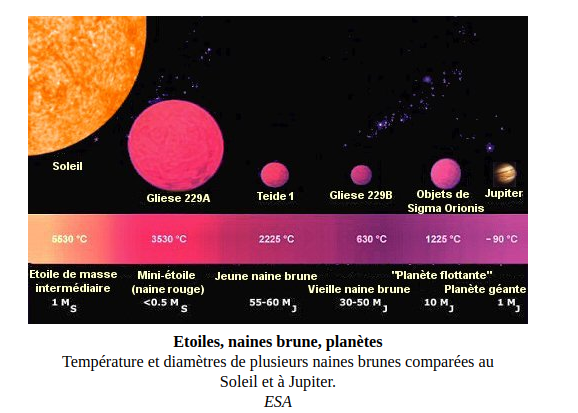
the text contained in the image cannot be translated, but its title can be translated: “Etoiles, naines brune, planètes” and its caption: “Température et diamètres de plusieurs naines brunes comparées au Soleil et à Jupiter.”.
To do this, first save the image on your computer, then go to the bottom of the page in the Illustrations section and add a new document.
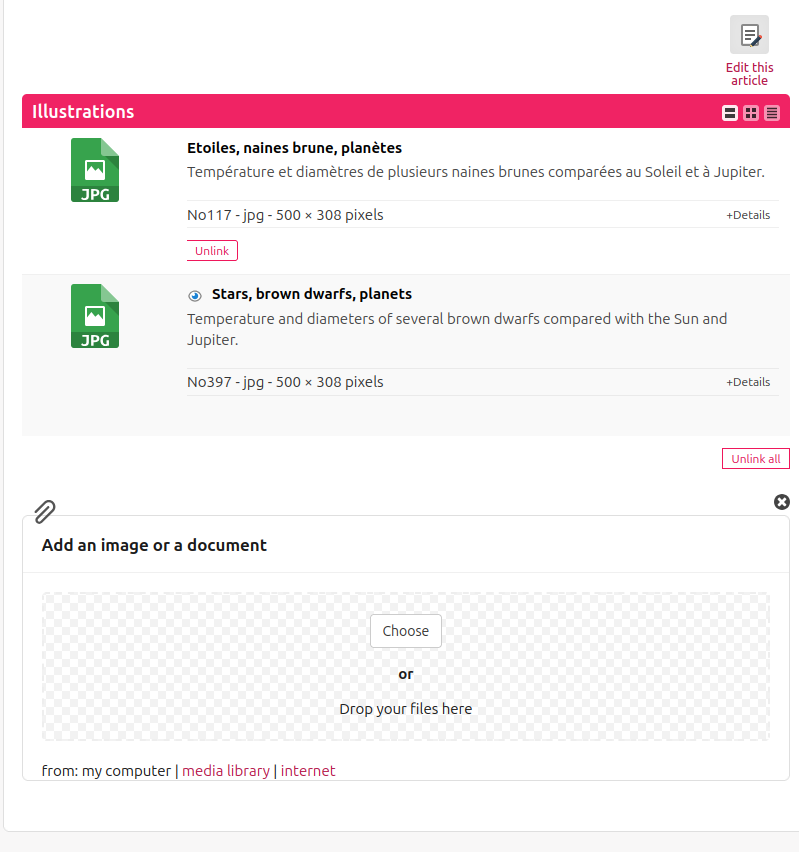
Choose the document you have just saved and click OK. Once the document has been added, it will appear just above in the illustrations. You will need to edit it to translate the title and caption. To do this, click on “Modify”.
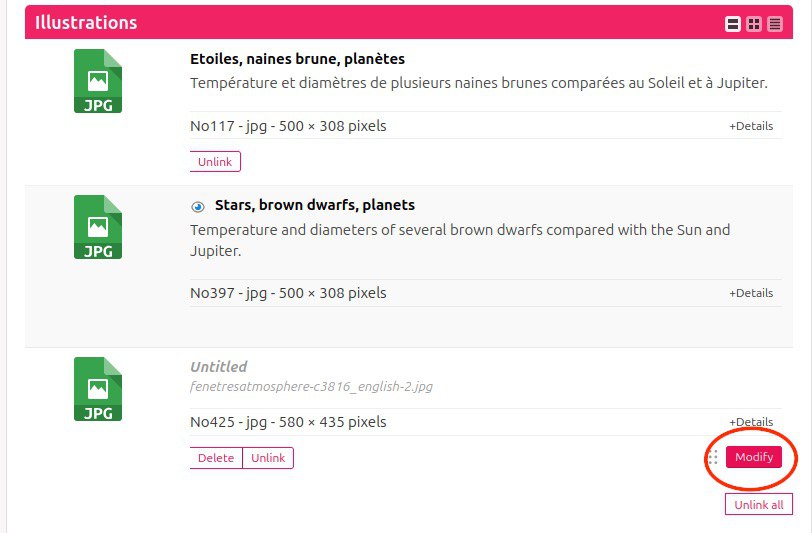
Now you can translate the title and caption. Caution: don’t forget to add the credits.
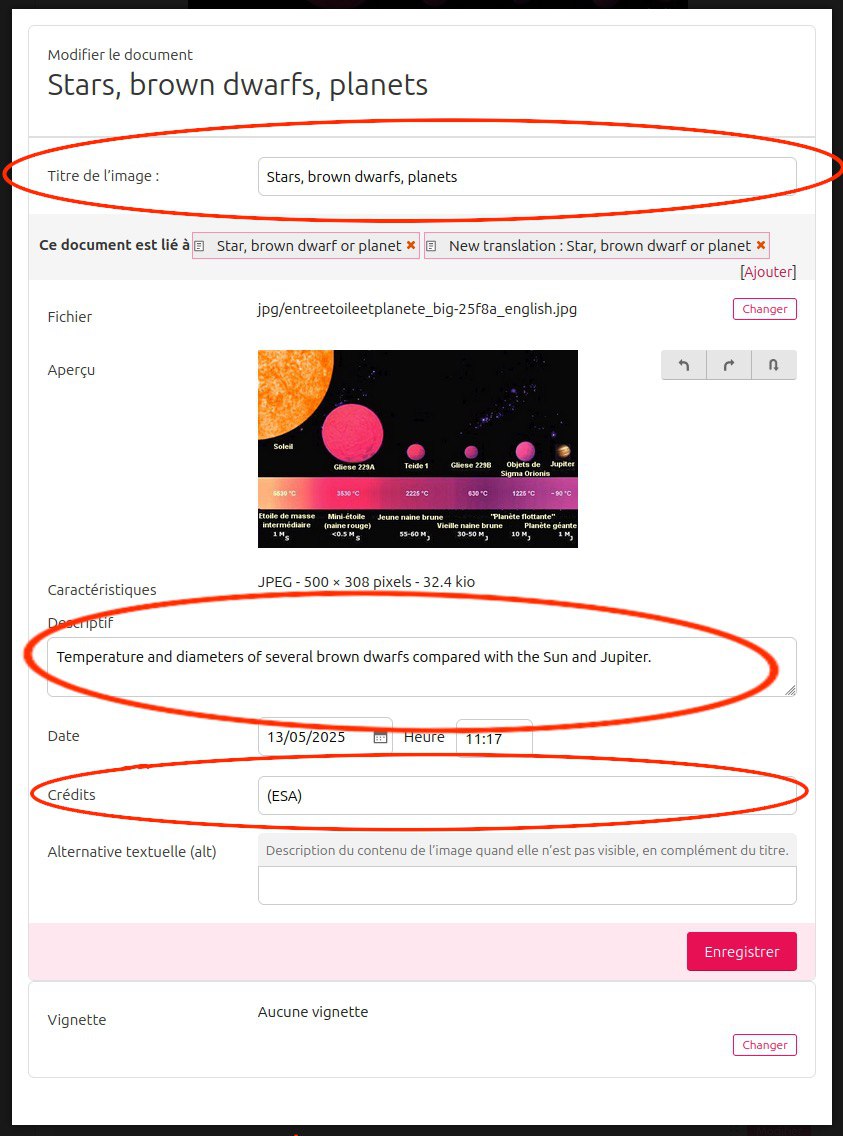
Check in your article that the document has been translated correctly.
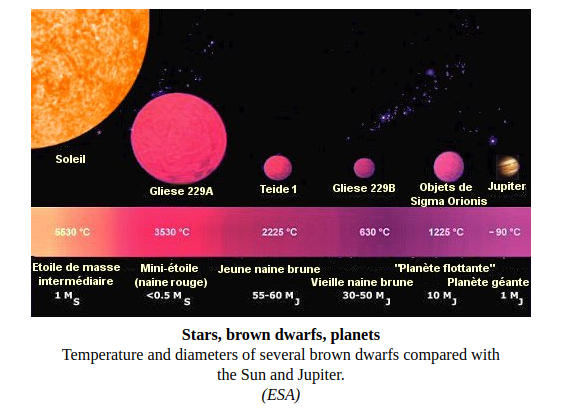
Now you can change the number of the document in the article with the new document number: <doc424>.

Finalise your article
Once the translation has been completed and saved, you need to alter the language. To do this, click on “Change” on the “Article language” line and select the language for the translation.
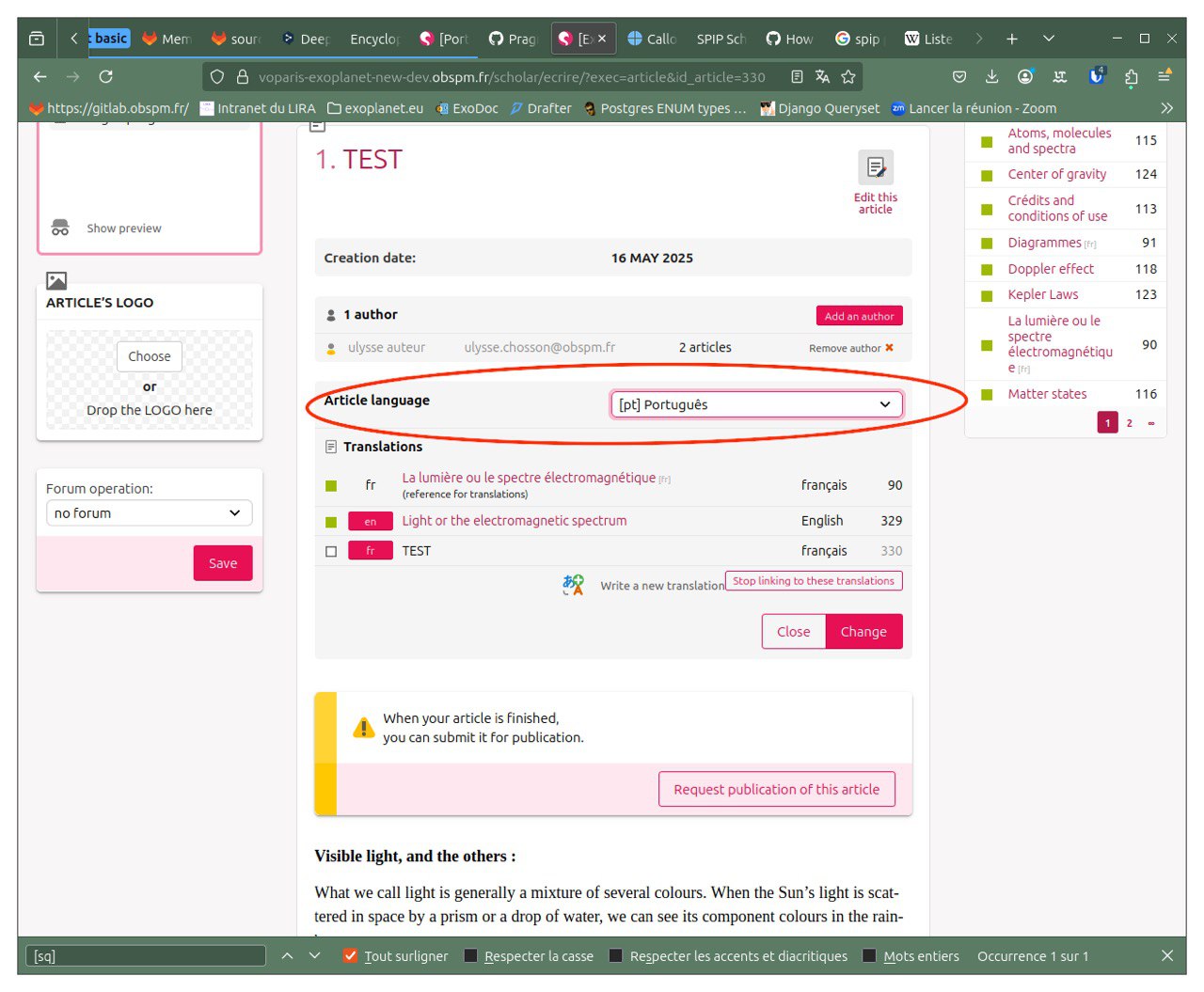
Before submitting your translation, you must check its keywords. If you are translating a so-called ‘classic’ article (with a number in front of the article title), the keywords part must be empty.
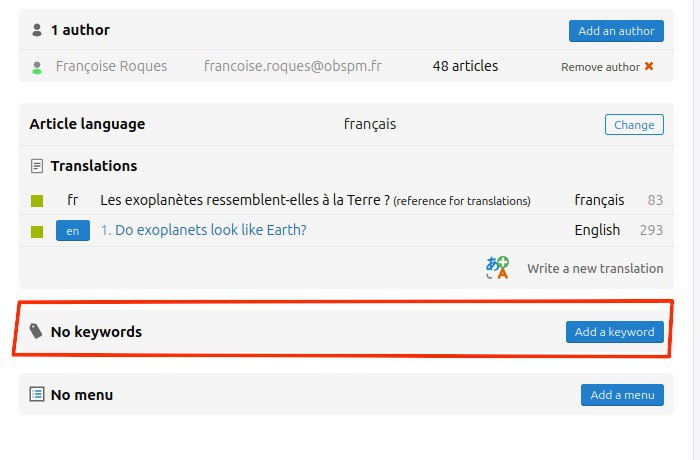
If you are translating an article that is a section introduction (without a number in front of the article title), you must check that the keywords part does not contain the keyword “Présentation de rubrique” and add the keyword “Ne pas afficher dans aside”.
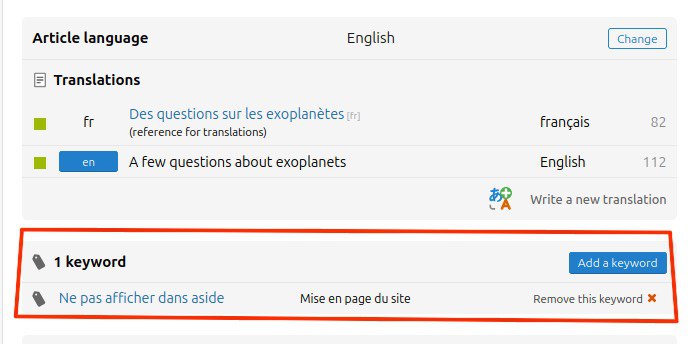
To do this, click on “Add a keyword” and then select “Ne pas afficher dans aside” in the “Mise ne page du site” selector then click on “add”.
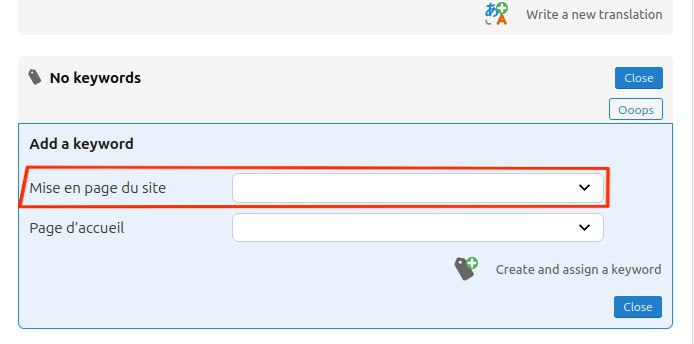
Once you have selected the language, you need to submit your article for evaluation by clicking on “submitted for evaluation” on the article status on the left of the window.
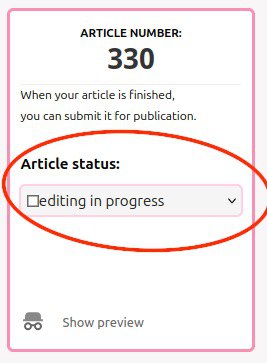
You can also see a preview of your article.